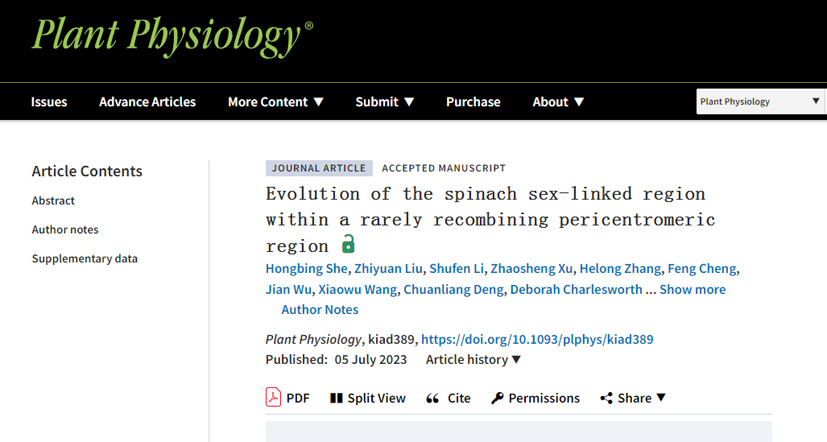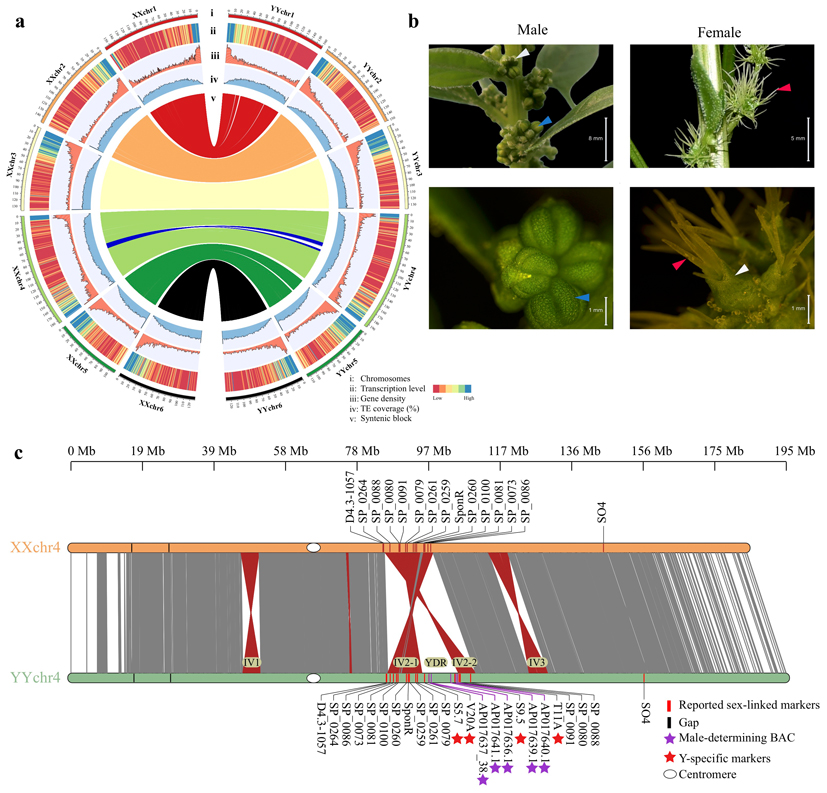Recently, the spinach genetic breeding group of the Institute of Vegetables and Flowers published a paper entitled "Evolution of the spinach sex-linked region within a rarely recombining pericentromeric region" in Plant Physiology. In this study, we de novo two high-quality reference genomes for spinach (Spinacia oleracea) by sequencing homozygous XX females and YY males. We identified complete sex-linked region and unraveled its evolutionary mechanism.

Spinach (Spinacia oleracea L.) is a dioecious species and has an XY sex-determining system with homomorphic X and Y chromosomes. Males are heterogamtic (XY), and females are homogametic (XX). Occasionally XY monoecious individuals with both male and female flowers are observed. Thus, spinach is an ideal species to investigate sex determination.
In this study, we described reference genomes for spinach X and Y haplotypes by sequencing homozygous XX females and YY males and identified a complete sex-linked region (SLR). The long arm of the Chr4 carries a 13 Mb X-linked region (XLR) and 24.1 Mb Y-linked region (YLR), of which 10 Mb is Y-specific (termed “Y duplication region” or “YDR”). Both X and Y sex-linked region are within a large pericentrometic region of Chr4 that recombines rarely in meiosis of both sexes. Sequence divergence estimates using synonymous sites indicate that YDR genes started diverging from their likely autosomal progenitors about 3 MYA, around the time when the flanking YLR stopped recombining with the XLR. These flanking regions have a higher density of repetitive sequences in the YY than the XX assembly and include slightly more pseudogenes compared with the XLR, and the YLR has lost about 11% of the ancestral genes, suggesting some degeneration. These findings not only provide a broader understanding of the evolution of sex chromosomes in dioecious plants, but also have important scientific significance for spinach breeding.

Figure 1. High-quality genomes of female (XX) and male (YY) and fine structure of sex-linked region in spinach.
Dr. Hongbing She, Prof. Zhiyuan Liu and Prof. Shufen Liu contributed equally to this work. Prof. Wei Qian, Prof. Wujun Gao, and Prof. Deborah Charlesworth are corresponding authors of the paper. This work was supported by the Youth innovation Program of Chinese Academy of Agricultural Sciences, Chinese Academy of Agricultural Sciences Innovation Project and China Agricultural Research System.
Link: https://academic.oup.com/plphys/advance-article/doi/10.1093/plphys/kiad389/7219348?login=true